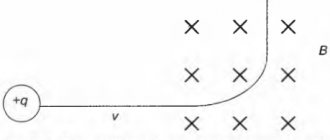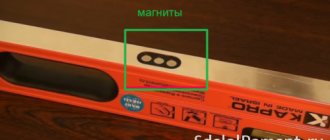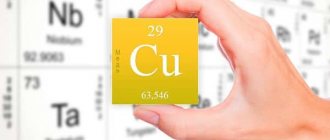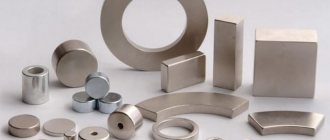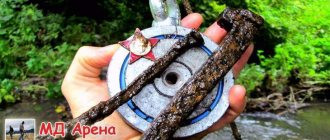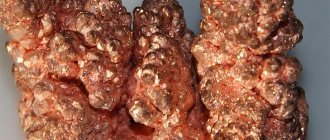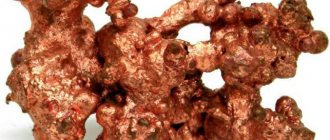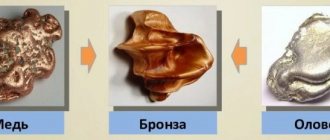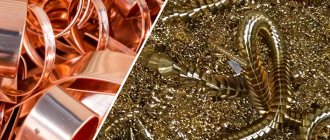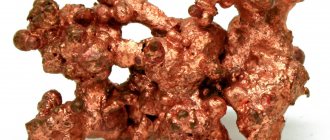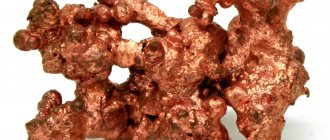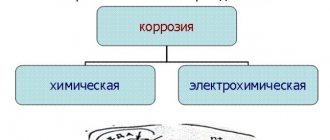What metals are not magnetic and why?
Any child knows that metals are attracted to magnets. After all, they have more than once hung magnets on the metal door of the refrigerator or letters with magnets on a special board. However, if you put a spoon against a magnet, there will be no attraction. But the spoon is also metal, so why does this happen? So, let's find out which metals are not magnetic.
Scientific point of view
To determine which metals are not magnetic, you need to find out how all metals in general can relate to magnets and a magnetic field. With respect to the applied magnetic field, all substances are divided into diamagnetic, paramagnetic and ferromagnetic.
Each atom consists of a positively charged nucleus and negatively charged electrons. They move continuously, which creates a magnetic field. The magnetic fields of electrons in one atom can enhance or cancel each other, depending on the direction of their movement. Moreover, the following can be compensated:
- Magnetic moments caused by the movement of electrons relative to the nucleus are orbital.
- Magnetic moments caused by the rotation of electrons around their axis are spin moments.
If all magnetic moments are equal to zero, the substance is classified as diamagnetic. If only spin moments are compensated - to paramagnets. If the fields are not compensated, use ferromagnets.
Paramagnets and ferromagnets
Let's consider the option when each atom of a substance has its own magnetic field. These fields are multidirectional and compensate each other. If you place a magnet next to such a substance, the fields will be oriented in one direction. The substance will have a magnetic field, a positive and a negative pole.
Then the substance will be attracted to the magnet and can itself become magnetized, that is, it will attract other metal objects. For example, you can magnetize steel clips at home. Each one will have a negative and a positive pole, and you can even hang a whole chain of paper clips on a magnet.
Such substances are called paramagnetic.
Ferromagnets are a small group of substances that are attracted to magnets and are easily magnetized even in a weak field.
Diamagnets
In diamagnetic materials, the magnetic fields inside each atom are compensated.
In this case, when a substance is introduced into a magnetic field, the movement of electrons under the influence of the field will be added to the natural movement of electrons.
This movement of electrons will cause an additional current, the magnetic field of which will be directed against the external field. Therefore, the diamagnetic material will be weakly repelled from the nearby magnet.
So, if we approach the question from a scientific point of view, which metals are not magnetic, the answer will be – diamagnetic.
Distribution of paramagnets and diamagnets in the periodic table of Mendeleev elements
The magnetic properties of simple substances change periodically with increasing atomic number of the element.
Substances that are not attracted to magnets (diamagnets) are located mainly in short periods - 1, 2, 3. Which metals are not magnetic? These are lithium and beryllium, and sodium, magnesium and aluminum are already classified as paramagnetic.
Substances that are attracted to magnets (paramagnets) are located mainly in the long periods of the Mendeleev periodic system - 4, 5, 6, 7.
However, the last 8 elements in each long period are also diamagnetic.
In addition, three elements are distinguished - carbon, oxygen and tin, the magnetic properties of which are different for different allotropic modifications.
In addition, there are 25 more chemical elements whose magnetic properties could not be established due to their radioactivity and rapid decay or the complexity of synthesis.
The magnetic properties of lanthanides and actinides (all of which are metals) change irregularly. Among them there are para- and diamagnetic materials.
There are special magnetically ordered substances - chromium, manganese, iron, cobalt, nickel, the properties of which change irregularly.
What metals are not magnetic: list
There are only 9 ferromagnets, that is, metals that are highly magnetic, in nature. These are iron, cobalt, nickel, their alloys and compounds, as well as six lanthanide metals: gadolinium, terbium, dysprosium, holmium, erbium and thulium.
Metals that are attracted only to very strong magnets (paramagnetic): aluminum, copper, platinum, uranium.
Since in everyday life there are no such large magnets that would attract a paramagnetic material, and also no lanthanide metals are found, we can safely say that all metals except iron, cobalt, nickel and their alloys will not be attracted to magnets.
So, what metals are not magnetic to a magnet:
- paramagnetic materials: aluminum, platinum, chromium, magnesium, tungsten;
- diamagnetic materials: copper, gold, silver, zinc, mercury, cadmium, zirconium.
In general, we can say that ferrous metals are attracted to a magnet, non-ferrous metals are not.
If we talk about alloys, then iron alloys are magnetic. These primarily include steel and cast iron. Precious coins can also be attracted to a magnet, since they are not made of pure non-ferrous metal, but of an alloy that may contain a small amount of ferromagnetic material. But jewelry made of pure non-ferrous metal will not be attracted to a magnet.
What metals do not rust and are not magnetic? These are ordinary food grade stainless steel, gold and silver items.
Diamagnets
Diamagnets are substances that are magnetized in an external magnetic field in the direction opposite to the direction of the magnetic induction vector of the field.
Diamagnets include substances whose magnetic moments of atoms, molecules or ions are equal to zero in the absence of an external magnetic field. Diamagnets are inert gases, molecular hydrogen and nitrogen, zinc, copper, gold, bismuth, paraffin and many other organic and inorganic compounds.
In the absence of a magnetic field, a diamagnetic material is nonmagnetic, since in this case the magnetic moments of the electrons are mutually compensated, and the total magnetic moment of the atom is zero.
Because The diamagnetic effect is caused by the action of an external magnetic field on the electrons of the atoms of a substance, then diamagnetism is characteristic of all substances.
It should be noted that the magnetic permeability of diamagnetic materials is µ < 1 . For example, gold has µ
= 0.999961, for copper
µ
= 0.9999897, etc.
In a magnetic field, diamagnetic materials are located perpendicular to the lines of force of the external magnetic field.
Is copper magnetic to a magnet - Metals, equipment, instructions
February 24, 2015.
In the magnetic circuits of various electrical machines, transformers, instruments and apparatus of electrical engineering, radio engineering and other branches of technology, a variety of magnetic and non-magnetic materials are found.
The magnetic properties of materials are characterized by the values of magnetic field strength, magnetic flux, magnetic induction and magnetic permeability.
The relationship between magnetic induction and magnetic field strength, expressed graphically, forms a curve called a hysteresis loop. Using this curve, you can obtain a series of data characterizing the magnetic properties of the material.
An alternating magnetic field causes the appearance of eddy currents in magnetic materials. These currents heat the cores (magnetic cores), which leads to the consumption of some power.
To characterize a material operating in an alternating magnetic field, the total value of power expended on hysteresis and eddy currents at a frequency of 50 Hz is referred to 1 kg of material weight. This value is called specific losses and is expressed in W/kg.
The magnetic induction of a particular magnetic material should not exceed a certain maximum value, depending on the type and quality of the material. Attempts to increase induction lead to increased energy losses in a given material and its heating.
Magnetic materials are classified as soft magnetic and hard magnetic.
Magnetic soft materials
Soft magnetic materials must meet the following requirements:
- have a large relative magnetic permeability µ, which makes it possible to obtain a large magnetic induction B with the smallest possible number of ampere-turns;
- have the lowest possible losses due to hysteresis and eddy currents;
- have stable magnetic properties.
Soft magnetic materials are used as magnetic cores of electrical machines, transformer cores, chokes, relay electromagnets, electrical measuring instruments, and the like. Let's look at some soft magnetic materials.
Electrical hardware
obtained by electrolysis of sulphide or ferric chloride, followed by melting in vacuum of the electrolysis products. Powdered electrolytic iron is used for the production of magnetic parts, similar to the production of ceramics or plastics.
Carbonyl iron
obtained in the form of a powder as a result of the thermal decomposition of a substance that includes iron, carbon and oxygen [Fe(CO)5].
At a temperature of 1200 °C, carbonyl iron powder is sintered and used to manufacture the same parts that are made from electrolytic iron. Carbonyl iron is characterized by high purity and ductility; used in the electrovacuum industry, as well as in instrument making for the manufacture of laboratory instruments and devices.
The two types of highly pure iron we considered (electrolytic and carbonyl) contain no more than 0.05% impurities.
Electrical steel sheets
is the most common material in electrical engineering and transformer manufacturing. Electrical steel is alloyed with silicon to improve its magnetic properties and reduce hysteresis losses. In addition, as a result of the introduction of silicon into the steel composition, its resistivity increases, which leads to a decrease in eddy current losses.
Sheet thickness depending on the steel grade is 0.3 and 0.5 mm. Electrical steel, cold rolled and then annealed in a hydrogen atmosphere, has particularly high magnetic properties. This is explained by the fact that the metal crystals are located parallel to the rolling direction. This steel is designated by the letters KhVP (cold-rolled high permeability, textured).
Steel sheets have dimensions from 1000 × 700 to 2000 × 1000 mm.
The grades of electrical steel used to be designated, for example, as follows: E3A, E1AB, E4AA. The letter E means electrical steel; letter A – reduced power losses in an alternating magnetic field; letters AA - especially low losses; letter B – increased magnetic induction; numbers 1 – 4 show the amount of silicon contained in steel as a percentage.
According to GOST 802-54, new designations for electrical steel grades have been introduced, for example: E11, E21, E320, E370, E43. Here the letter E stands for electrical steel; first numbers: 1 – lightly doped with silicon; 2 – medium doped with silicon; 3 – highly alloyed with silicon and 4 – highly alloyed with silicon.
The second digits in the designation of grades indicate the following guaranteed magnetic and electrical properties of steels: 1, 2, 3 – specific losses during magnetization reversal of steels at a frequency of 50 Hz and magnetic induction in strong fields; 4 – specific losses during magnetization reversal of steels at a frequency of 400 Hz and magnetic induction in average fields; 5, 6 – magnetic permeability in weak fields (H less than 0.01 A/cm); 7, 8 – magnetic permeability in medium fields (H from 0.1 to 1 A/cm). The third digit 0 indicates that the steel is cold-rolled, textured.
Permalloy
an alloy of iron and nickel. Approximate composition of permalloy: 30–80% nickel, 10–18% iron, the rest copper, molybdenum, manganese, chromium. Permalloy is easily processed and is available in sheet form.
It has very high magnetic permeability in weak magnetic fields (up to 200,000 H/cm).
Permalloy is used for the manufacture of telephone and radio communication parts, transformer cores, inductors, relays, and parts of electrical measuring instruments.
Alsifer
an alloy of aluminum, silicon and iron. The approximate composition of alsifer is: 9.5% silicon, 5.6% aluminum, the rest is iron. Alsifer is a hard and brittle alloy, so it is difficult to process.
The advantages of alsifer are high magnetic permeability in weak magnetic fields (up to 110,000 H/cm), high resistivity (ρ = 0.81 Ohm × mm²/m), and the absence of scarce metals in its composition.
Used for the manufacture of cores operating in high-frequency installations.
Permendur
an alloy of iron with cobalt and vanadium (50% cobalt, 1.8% vanadium, the rest iron). Permendur is available in the form of sheets, strips and tapes. It is used for the manufacture of electromagnet cores, dynamic loudspeakers, membranes, telephones, oscilloscopes and the like.
Magnetodielectrics
These are magnetically soft materials, crushed into small grains (powder), which are isolated from one another by resins or other binders. Electrical iron, carbonyl iron, permalloy, alsifer, magnetite (feO Fe2O3 mineral) are used as magnetic material powder.
Insulating binders are: shellac, phenol-formaldehyde resins, polystyrene, liquid glass and others. The magnetic material powder is mixed with an insulating binder, thoroughly mixed, and from the resulting mass the cores of transformers, chokes, and radio equipment parts are pressed under pressure.
The granular structure of magnetodielectric materials causes low losses due to eddy currents when these materials operate in magnetic fields of high-frequency currents.
Search magnet for gold and silver and its properties
Typically, powerful magnets are designed to find precious metals. A search magnet reacts to gold and silver quite strongly, and although it is difficult to find them in their pure form, its power is enough to pick up jewelry and coins from the ground. The main goal of all search engines is treasures, expensive coins, and sometimes just ferrous metal.
The article will describe the structure of the magnet and the basic principle of operation. He will also figure out what exactly can be found with its help and how to find expensive alloys. It will be explained in detail what ferromagnets, paramagnets and diamagnetic materials are. In addition, valuable tips and recommendations will be given that will greatly simplify the search for valuable items.
Search magnet device
This device consists of a steel case, inside of which there is a neodymium magnet. It is made from a rare alloy containing neodymium, iron and boron. This compound has a powerful attractive property. Despite its compactness, it is capable of holding things tens of times its own weight.
To make it easier to get various things, the case is equipped with a special mount. It is screwed into the magnet body via a thread.
On top of the fastener there is a fastener in the form of a hook or loop that will hold the cable or rope. This mount has a rigid base that is firmly screwed into the body.
The entire structure has a reliable foundation, and in this case, there is no fear in lifting any expensive and heavy thing.
Principle of operation
The search magnet has rather poor functionality. The main task of such an object is to attract as many metal objects as possible.
But the device copes with its main task more than well.
Thanks to its unique design, it has great strength and is able to hold quite large objects, as well as objects containing gold or silver, which ordinary magnets cannot handle.
Copper and magnet interaction - Metalist's Handbook
Any child knows that metals are attracted to magnets. After all, they have more than once hung magnets on the metal door of the refrigerator or letters with magnets on a special board. However, if you put a spoon against a magnet, there will be no attraction. But the spoon is also metal, so why does this happen? So, let's find out which metals are not magnetic.
Permanent magnets
> Theory > Permanent magnets
There are two main types of magnets: permanent and electromagnets. You can determine what a permanent magnet is based on its main properties.
A permanent magnet gets its name because its magnetism is always “on.”
It generates its own magnetic field, unlike an electromagnet, which is made of wire wrapped around an iron core and requires current to flow to create a magnetic field.
Permanent magnet
History of the study of magnetic properties
Centuries ago, people discovered that some types of rocks have an original property: they are attracted to iron objects. Mention of magnetite is found in ancient historical chronicles: more than two thousand years ago in European and much earlier in East Asian. At first it was regarded as a curious object.
Magnet check
Electromagnetic waves emitted by the substance are responsible for the magnetic properties of objects. When interacting with a magnet, some metals are attracted, but some do not react, since there is no electromagnetic radiation. Cuprum also belongs to these. This metal is diamagnetic, and therefore will not react to a magnet. Moreover, the copper field is repelled by the magnet. This unique property has led to the use of metal in electrical products, since under the influence of current it creates the necessary field for the movement of electronic particles. If a magnet is attracted to the sample, it means that it is an alloy in which there is no more than half of the required metal.
Expert opinion
Sidorenko Alexander
Antiques appraiser, numismatist
But sometimes there are samples that also do not have magnetic properties, although they do not consist of pure copper. This happens when there is aluminum underneath the copper coating. It is also diamagnetic, so aluminum products will not be attracted to a magnet.
An object made of pure cuprum may become magnetic over time if it oxidizes. As a result, a film is created on the surface that has high ferromagnetic properties.
What metals are magnetic?
Only steels have magnetic properties , and not all of them. For example, austenitic stainless steels do not attract magnets because they do not have ferromagnetic properties.
However, there are a sufficient number of enthusiasts who believe that magnetic waves are emitted by any metal, and therefore there should be a search magnet for gold and silver, and for some this expression is quite normal for perception and practical use.
ATTENTION! MAGNETS FOR SEARCHING GOLD, COPPER, SILVER DO NOT EXIST!
THEY SIMPLY ARE NOT - ANYWHERE!
In our article we describe the theory of how non-ferrous and precious metals can be detected using magnetic fields. This article is our fantasy, supported by scientific developments of foreign scientists.
See also the article - Extraction of scrap metal from water (about ferrous metal and search magnet).
Device for adjusting the magnetic field from metal objects
Strictly speaking, this is not a magnet, but rather an electromagnet, with the help of which you can initiate and configure any magnetic radiation, even quite weak ones, to be captured by appropriate devices. It is not easy to build such a device, but the authors, citizens of Australia, have no doubt about its effectiveness.
That's why they patented their invention in their patent office. Based on the fact that Australian soil is not much different from domestic soil, we will give a description of the device and operating principle of such a magnet for gold and silver.
Although it is necessary to repeat - in the generally accepted sense, this design has nothing .
The operation of the device is based on the well-known physical fact that when any object that generates magnetic oscillations in an alternating electric field moves, changes occur inside the trapper circuit associated with the movement of atoms around the nucleus.
If the area of electric field generation is sequentially moved along or across the magnetic field from a metal object, changes will occur in this area, the intensity of which determines the degree and strength of the interaction of two fields - magnetic and electric.
The difficulty is that strong magnetic fields are not created by noble metals . It is known, for example, that, according to the principle of decreasing, the electrochemical potentials of non-ferrous metals are located as follows (we consider only the area of interest to us): copper → mercury → silver → palladium → platinum → gold.
Thus, if the expression “is copper attracted to a magnet” may still have some basis, then the phrase “magnet for gold” does not make any sense at all.
It is more correct to talk about an electromagnetic trap, which will record the fact of a coordinated change in electric and magnetic fields in a certain, rather local, metallic volume.
— how copper interacts with a magnet:
Recording of changes that occur in the apparatus under the influence of such fields is captured by the measuring circuit. It is a highly sensitive spring made of rhenium, a rare metal that is absolutely insensitive to temperature changes. The rhenium spring must be adjusted to operate.
The process is to set the conditional zero of the device, for which it is placed as far as possible from all metal objects. In urban areas, such a “search magnet for gold, silver and other precious metals” will not work. However, search engines are much more likely to look for gold, platinum, copper, silver, etc.
in old abandoned rural estates...
With any movement of the device, a similar action occurs with the electric field, while the magnetic field remains constant in coordinates. Therefore, the resulting movement of the spring will also be different.
Where it turns out to be most intense, its source is almost certainly located - the magnetic field. Another thing is that this kind of search magnet for non-ferrous metals will not be able to show which metal is hidden under the thickness of wood or earth.
But the device will definitely show that there is metal there.
Any metal can be detected by a magnetic field
The principle of operation of such a pseudo-magnet is similar to the coils of a metal detector, with the only difference being that the “magnet” will be tuned to only 1 metal and this is in theory - but we don’t know how it will behave in practice, BUT, most likely, it’s cheaper, faster and simpler will use an ordinary metal detector to search for non-ferrous metals, since not a single wizard has yet invented a magnet for non-ferrous and precious metals, maybe because there are no wizards!
How to assemble and set up
It will be very difficult to find/buy a rhenium spring, but all other parts of the device are quite accessible for making yourself. The sequence is:
- A steel axle is made from a thin-walled steel pipe with a diameter of no more than 16 mm. Its length should not be less than three diameters, otherwise the change in the magnetic field cannot be detected.
- A frame is made from thin copper or brass wire. The authors do not describe its dimensions, but, based on the dimensions of the tubular axis, it should be at least 200x200 mm. The frame must be sufficiently rigid.
- Three (as many as possible) holes are drilled in the tubular axle at equal distances, in which the wooden axles are placed.
- Thin-walled wooden disks are made, the number of which must correspond to the number of holes drilled in the axle. Obviously, discs can also be made of plywood: what matters is the mass of the disc and its absolute immunity to magnetic fields.
- The central sectors of each disk are covered with metal foil made of the metal that will be searched. Thus, a search magnet for non-ferrous metals - copper, gold and silver (platinum is searched for much less frequently) should have three sets of replaceable wooden disks.
- The frame with disks must be able to move freely along the entire tubular axis with fixation in a certain place. If the fits of the mating parts are made with the required accuracy, then there should be no swaying of the frame when it moves.
- To create a magnetic trap, plates from an old transformer are used, which are packed into the frame outline. The distance between adjacent plates should not exceed 1.5 mm in thickness, and 5...6 mm in length. Such plates form the screen of the device that perceives magnetic radiation.
- Next, assemble the magnetic coil. You will need a solenoid made of 600 layers of enameled wire, which is connected to an alternating current voltage source. The winding should be multilayer, this will reduce the parasitic capacitance of the coil and make the device less inertial.
- A ferromagnetic or - which is better - a ferroelectric core is inserted inside the coil.
- By connecting this structure through a step-down transformer, a constant position of the frame with the plates is achieved relative to the wooden disks. This will be the conditional zero of the search “magnet” for non-ferrous metals.
The easiest way to check whether a search “magnet” attracts gold and silver is on a real object made of these metals. At the same time, it will be possible to establish the practical sensitivity of the device.
about how a search magnet does NOT magnetize gold, silver and other coins
Typically, powerful magnets are designed to find precious metals. A search magnet reacts to gold and silver quite strongly, and although it is difficult to find them in their pure form, its power is enough to pick up jewelry and coins from the ground. The main goal of all search engines is treasures, expensive coins, and sometimes just ferrous metal.
